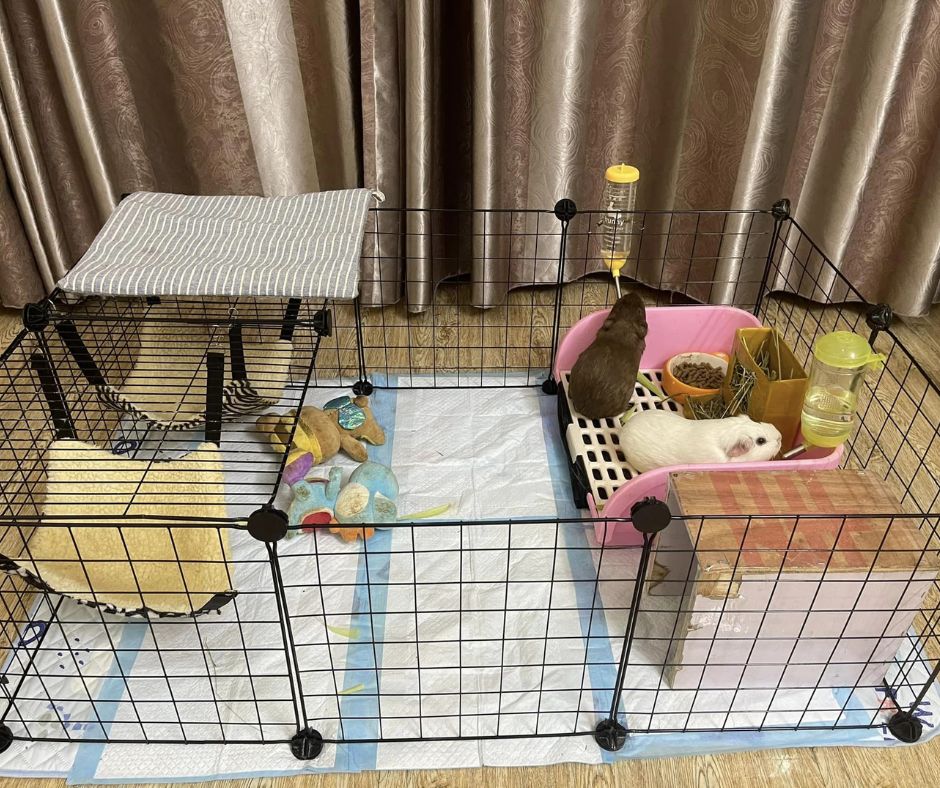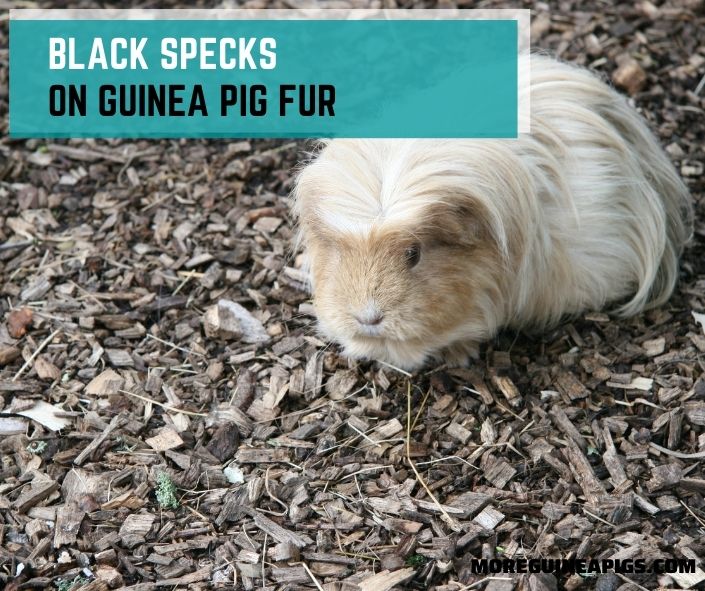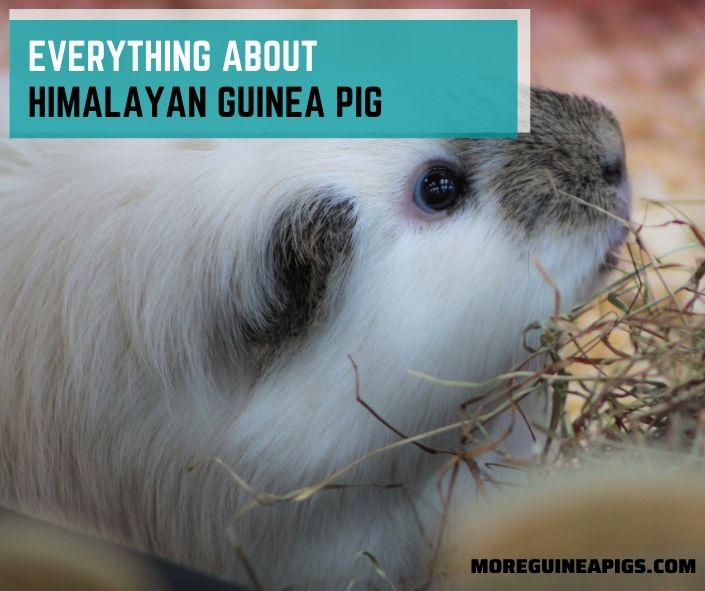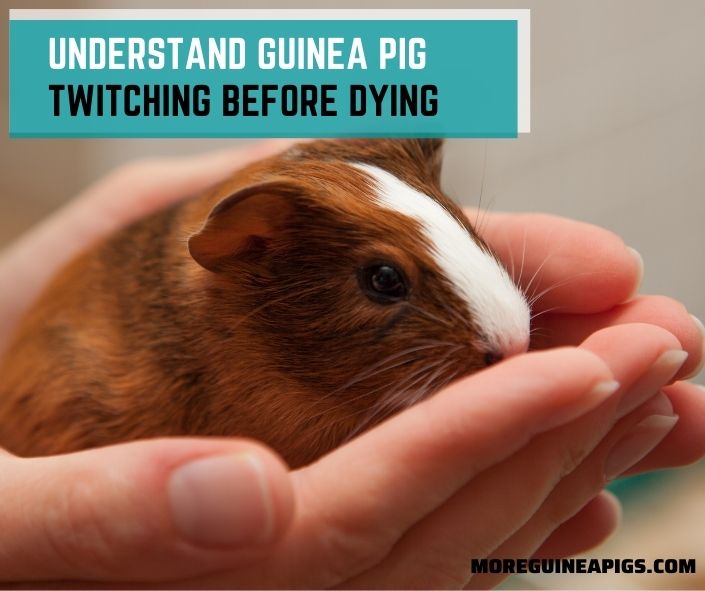Black Specks on Guinea Pig Fur: Cause and How to Deal with It
Rearing healthy guinea pigs is the desire of any responsible pet caretaker. Healthy pets are happy pets, and they make their owners happy.
If your guinea pig has black specks on its fur, it is natural to think it might be unwell or there is parasite infestation. But what is really the cause of black particles on guinea pigs?
Does it mean that your piggy’s environment is dirty or you’re depriving the pet of some nutrients, or your pet has a disease?
Read through the article to get the low-down on the source of black specks on guinea pigs’ fur.
Black Specks on Guinea Pig Fur: Cause and How to Deal with It

Maybe you are curious to know what I mean by black specks? What is it? Black specks on your pet piggy’s fur may be ‘dirt’ or insect poop, usually mites.
You will hardly see the black specks moving, sometimes the pet scratches itself on objects, or it just acts normal with no scraping. Cases that cause black specks in guinea pigs are;
#Case 1: Dirt
Your pet piggy may have black specks on its fur because of dirt. Moreover, sometimes dark-coloured towels can ‘shed’, and little pieces will come off when you’re drying the pet after bathing.
Whether it’s dirt or black towel remains, you should try cleaning the pet again and see if the black dots will clean up. If you still see them, then it could be a parasite problem.
#Case 2: A Sign of Mites
Your pet has mites, static mites, to be specific. That’s why you are seeing the black spots on the fur.
Static mites are easy to treat. You can use shampoo to clean the pet or go for Easimec or Xeno 450 drugs with pyrethrin. However, make sure to consult with your vet first before using any treatment drug.
Why Does Your Guinea Pig Have Mites?
Even healthy guinea pigs can get mites despite being under intensive care. Infected guinea pigs are the primary distributors of mites to their healthy counterparts.
The infestation will also spread indirectly through contaminated beddings, toys, food, or bowls. Dirty cages are the breeding hotspots for mites.
A sure symptom that your cute piggy has mites is frequent itching and scratching. Other signs to check out for include:
- Reduced appetite
- Weight reduction
- Seizures (occurs in severe cases)
- Inflamed skin or sores
- Bald spots
- Lethargy.

How Do You Get Rid of Mites on Guinea Pig?
Mites exist in two forms: static and sarcoptic mites and both affect guinea pigs. Static mites dwell on the piggy’s fur while sarcoptic mites burrow below the skin.
The latter is high-risk since it causes mange, a contagious skin disease that is extremely painful and can cause seizures. The treatment for both mites is different.
Talk to a guinea pig savvy vet to help you identify the type of mite affecting your pet piggy and administer the proper treatment.
For static mites, a spray or shampoo treatment is effective. On the other hand, the best treatment for mange mites is Ivermectin or selamectin.
Oral or topical Ivermectin is preferred for guinea pigs, but sometimes injection may be recommended.
Tip: Always make sure to clean and spray your guinea pig’s cage with an effective ectoparasiticide for guinea pigs. Otherwise, the treatment will be effortless.
What Happens If Mites on Your Guinea Pig Aren’t Treated?
Static mites will hinder a guinea pig from engaging in everyday activities because of continuous scratching. However, mange mites are dangerous and can kill your pet piggy if left untreated.
Likewise, sarcoptic mite infestation causes intense itching that may eventually result in seizures, exposing your guinea pig to heart attacks or stroke.
Mites are species-specific, meaning that guinea pig mites will hardly affect humans. Even so, if your skin is sensitive, you may get an itchy rash upon contacting an infected guinea pig. Be careful!
How To Prevent Mites on Guinea Pig

Although you won’t achieve 100% result in protecting your pet piggy from mites, you can subjugate the infestation. Below are measures approved in controlling mites on guinea pigs.
- Regular cleaning of the cage and beddings: Provide clean beddings at least once a week. Daily spot checks and remove any wet or soiled bedding.
- Perform regular health checks. Use a fine-tooth comb to part your piggy’s fur and check for any signs of parasites.
- Always feed high-quality pellets and hay and various fruits and vegetables. Also, provide vitamin C supplements. Proper dieting boosts the immunity of the animal and its health.
- Engage your guinea pigs in regular exercises. Provide ample space in the cage and toys for playing with. Having a cage mate is vital for guinea pigs. All this helps to prevent stress.
- It is recommended to check for new guinea pigs and ensure they are healthy and parasite-free before introducing them to a cage.
Kaytee Clean & Cozy Natural Small Animal Pet Bedding
FAQs
Why does my guinea pig havae black dandruff?
The presence of black dandruff on guinea pigs is associated with external parasites on the coat. Your guinea pig is perhaps infested by parasites.
How do You know Your guinea pig has mites?
A sure sign of mites in guinea pigs is continuous itching and scraping. If your pet behaves likewise, check for the coat of your piggy and see if there are any black specks.
What do static mites look like on guinea pigs?
Static mites appear like tiny dust particles on a guinea pig with a white coat. You will clearly see them under a microscope, but you can still see them with naked eyes as dirty specks.
Can you get mite or lice from guinea pigs?
No, it is uncommon to get mites from guinea pigs since the mite species that affect humans is not the same as that of guinea pigs.
Guinea Habitat Guinea Pig Cage by Midwest
In Conclusion
If you part the hair of your guinea pig and bump into tiny black specks, it could mean two things: either your pet has mites or dirt.
Mites in guinea pigs can be prevented through various ways, including regular health checks, feeding your pet a balanced diet, cleaning the cage and beddings more often, keeping your cavy stress-free, etc.
Both static mites and mange mites cause intense itching, but the latter is more painful and can eventually lead to seizures. Early treatment of mange mite infestation is vital before it becomes a life-threatening condition.









3 Comments
Comments are closed.